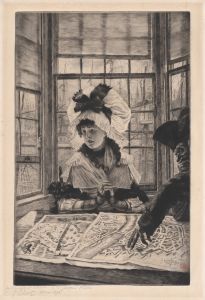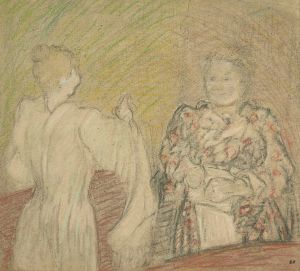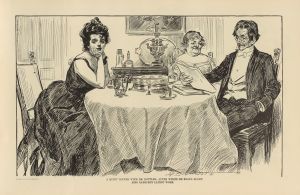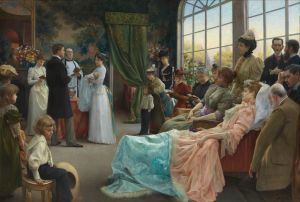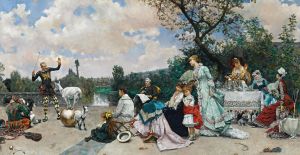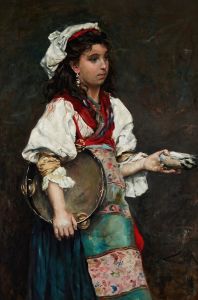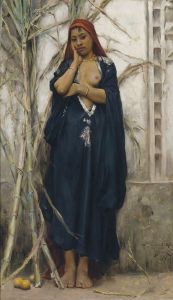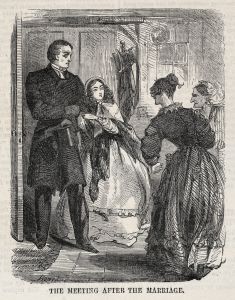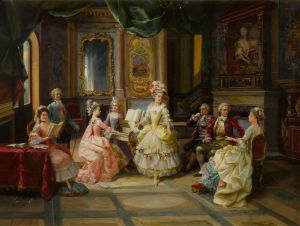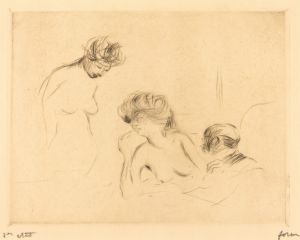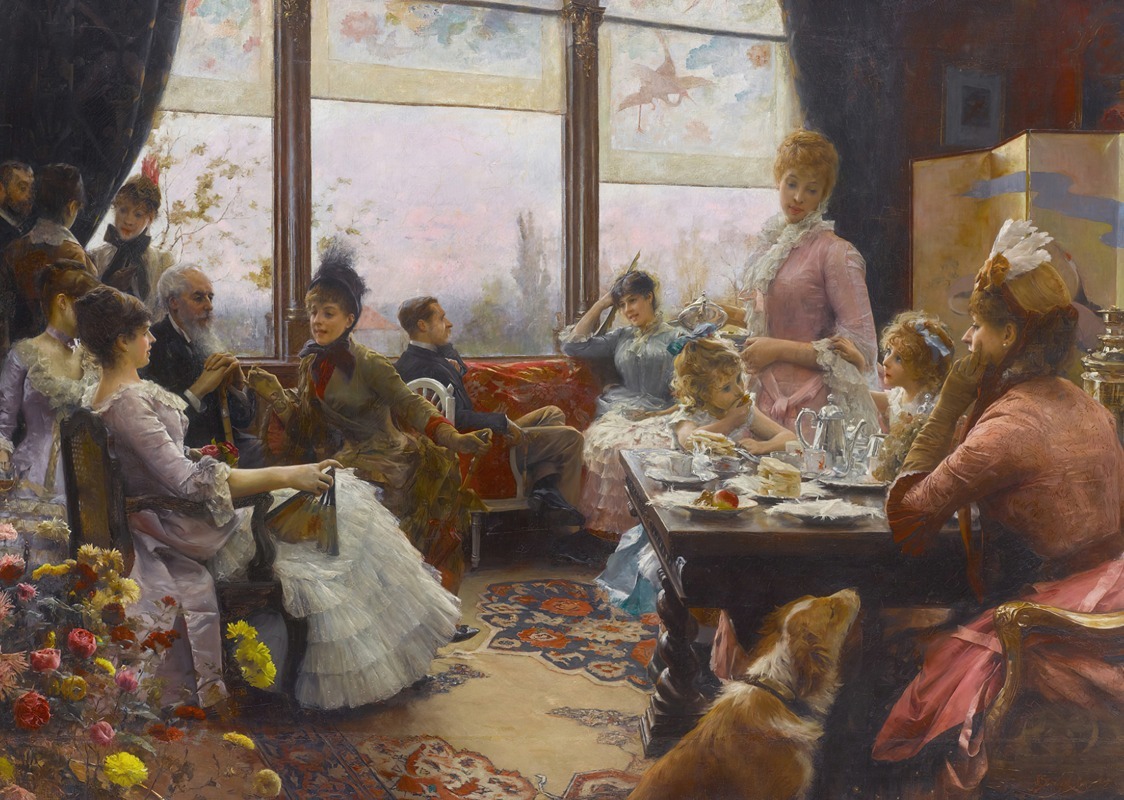
Five o’clock tea
A hand-painted replica of Julius Leblanc Stewart’s masterpiece Five o’clock tea, meticulously crafted by professional artists to capture the true essence of the original. Each piece is created with museum-quality canvas and rare mineral pigments, carefully painted by experienced artists with delicate brushstrokes and rich, layered colors to perfectly recreate the texture of the original artwork. Unlike machine-printed reproductions, this hand-painted version brings the painting to life, infused with the artist’s emotions and skill in every stroke. Whether for personal collection or home decoration, it instantly elevates the artistic atmosphere of any space.
Julius LeBlanc Stewart was an American artist known for his luxurious and detailed depictions of the social elite in the late 19th and early 20th centuries. One of his notable works is "Five O'Clock Tea," a painting that exemplifies his skill in capturing the elegance and opulence of the period.
"Five O'Clock Tea" was created in 1884, during a time when Stewart was living in Paris and was deeply immersed in the art scene there. The painting reflects the influence of the Belle Époque, a period characterized by cultural flourishing and a focus on leisure and luxury among the upper classes. Stewart's work often depicted the lives of the wealthy, and "Five O'Clock Tea" is no exception.
The painting portrays a group of elegantly dressed women gathered in a richly decorated interior, partaking in the social ritual of afternoon tea. This tradition, which originated in Britain, became popular among the upper classes in Europe and America during the 19th century. Stewart's depiction is notable for its attention to detail, from the intricate patterns on the women's dresses to the lavish furnishings of the room. The composition of the painting is carefully arranged to convey a sense of intimacy and refinement, with the figures engaged in conversation and enjoying their tea.
Stewart's use of light and color in "Five O'Clock Tea" is particularly striking. The soft, diffused light creates a warm and inviting atmosphere, highlighting the textures of the fabrics and the sheen of the porcelain tea set. The color palette is rich and harmonious, with deep reds, golds, and soft pastels that enhance the sense of luxury and comfort.
Julius LeBlanc Stewart was often compared to his contemporary, John Singer Sargent, another American artist who achieved great success in Europe. Both artists were known for their portraits and genre scenes that captured the elegance of their time. However, while Sargent often focused on individual portraits, Stewart's works frequently depicted groups and social gatherings, providing a broader view of the social dynamics of the era.
"Five O'Clock Tea" is a testament to Stewart's ability to capture the essence of a moment in time, reflecting the social customs and aesthetic values of the late 19th century. The painting is a valuable piece of cultural history, offering insight into the lives of the privileged classes during a period of significant social change. Stewart's work remains appreciated for its technical skill and its ability to convey the beauty and complexity of the world he inhabited.
Today, "Five O'Clock Tea" is part of private collections and occasionally featured in exhibitions that explore the art and culture of the Belle Époque. Stewart's paintings, including this one, continue to be studied and admired for their contribution to the understanding of the social and artistic milieu of their time.





